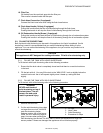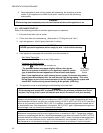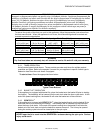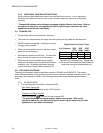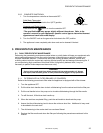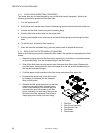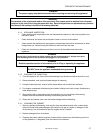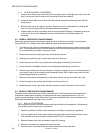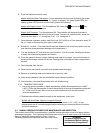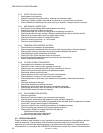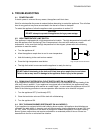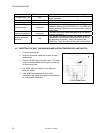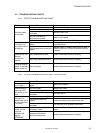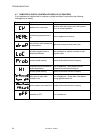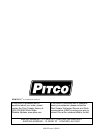PREVENTATIVE MAINTENANCE
30
L20-378 rev. 0 (9/12)
3.4.1. SAFETY EVALUATION
Check power cord and plug.
Check all exposed wiring connections, switches, and indicator lights.
Check legs, casters, wheels, plate welds and ensure all nuts and bolts are secured.
Check conditions of flexible gas line and verify fryer retention / lanyard system is in place.
3.4.2. MECHANICAL INSPECTION
Check frypot for shortening leaks and excessive oil build up
Check for oil migration (Clean as required)
Check hood drain cup, ensure it is empty and not dripping into the flue.
Check hood baffle for clean surface, oil/water condensate can drip on and into the flue.
Check flue for foreign debris and hood down draft currents.
Check drain/filtration system (if equipped) for leaks
Check for missing fryer parts, i.e.: cover strips
Check for missing fasteners
3.4.3. TEMPERATURE CONTROL SYSTEM
Check electrical connections and harnesses
Check temperature probes and limits for carbon build up and plating. Clean as required
Check proper mounting of probes and sensors and all fasteners are secure.
Check thermistor probe resistances for stability.
Check DVI Drain Valve Interlock drops out controller.
Check Controller/thermostat features to ensure they are functioning.
Check Temperature Calibration
3.4.4. FILTER SYSTEM (IF EQUIPPED)
Check electrical connections and harnesses.
Check IEC power cords are fully engaged and secure.
Check for any air or shortening leaks and for excessive oil build-up.
Check O-Ring on filter pickup tube and replace as needed.
Check filter strainer on pickup tube.
Check operation of drain valve and DVI drain valve interlock.
Check operation of return oil valve and its pump switch.
Check operations of flush hose quick disconnect (if equipped), clean and lubricate as
needed.
Check all hardware in filter pan.
Check filter operation by filtering the fryers.
Check pump motor amp draw compare to nameplate amperage.
Check pump and motor, clean any excess oil from pump assembly.
Check all filter hoses for leaks and integrity.
3.4.5. GAS COMBUSTION SYSTEM
Check for gas leaks.
Check and clean vent tube on gas valve pressure regulator.
Check burners, clean debris and grease from pilot and pilot orifice tips.
Check self cleaning burner system (if equipped) that it activates when the appliance is turned
on and NOT during normal cooking & idle periods.
Check and adjust burner manifold gas pressure to nameplate reading.
Check incoming gas pressure when all gas appliances are on.
Check ignition system and adjust pilot flame as required.
Check flame sensor reading.
Check gap spacing and clean igniter.
Recheck for gas leaks after inspection.
3.5. VENTILATION HOOD
Proper ventilation hood operation is very important for the correct operation of this appliance and the
safety of personnel. The ventilation hood should be inspected at the time of installation of this
appliance to insure that it will operate properly in conjunction with the appliance. A regular schedule
of examination, in accordance with ANSI/NFPA 96 latest edition and/or local codes must be followed.



